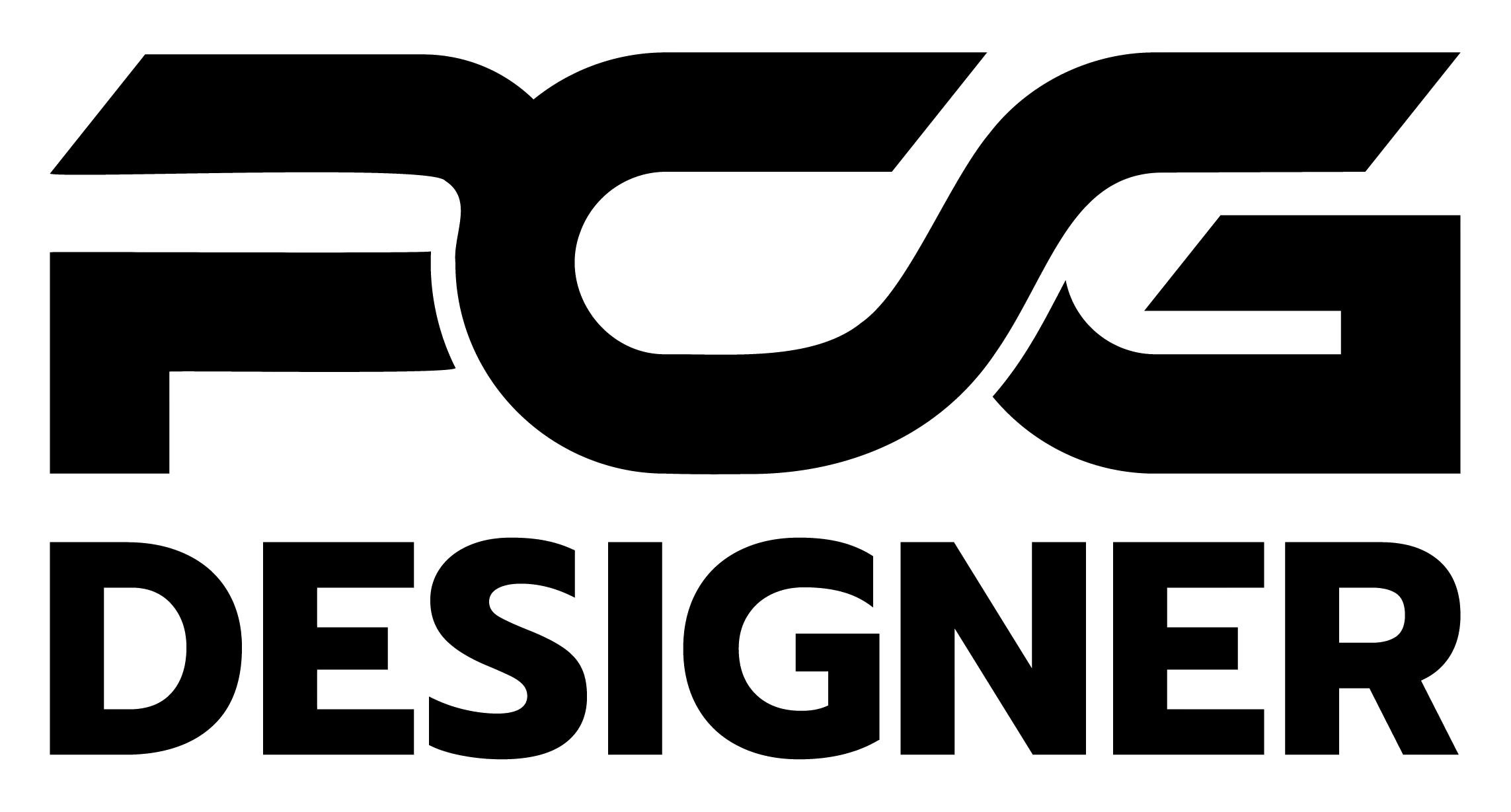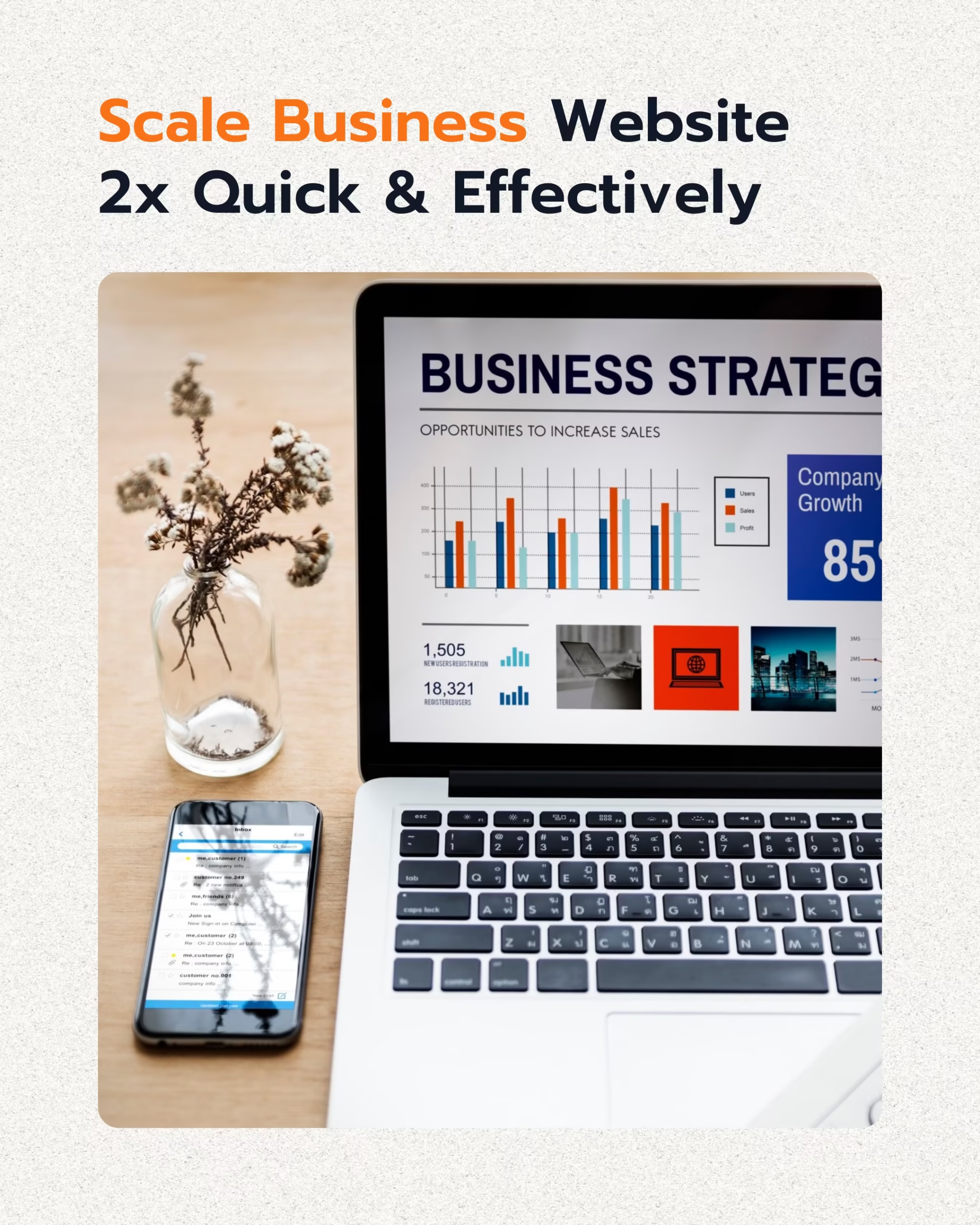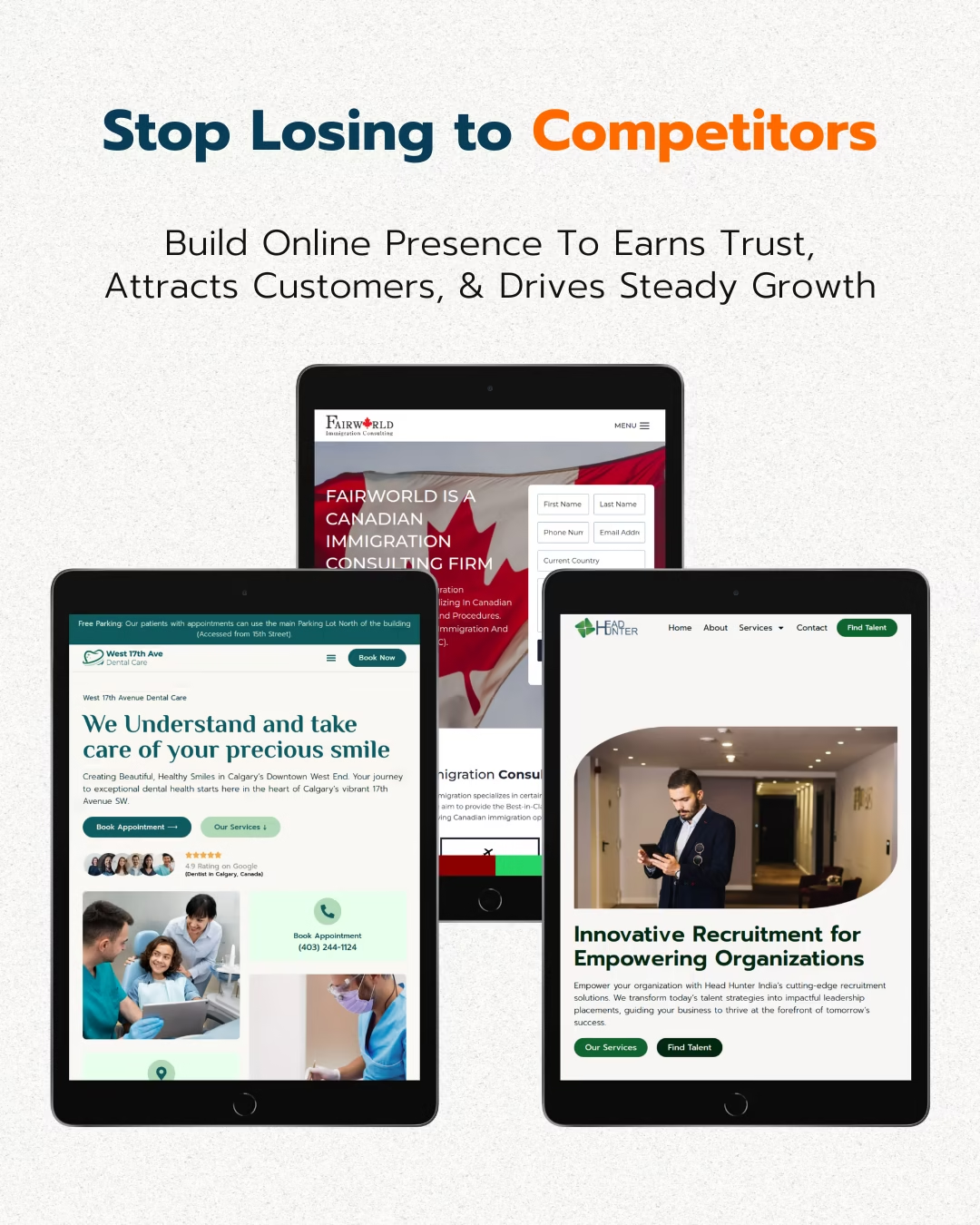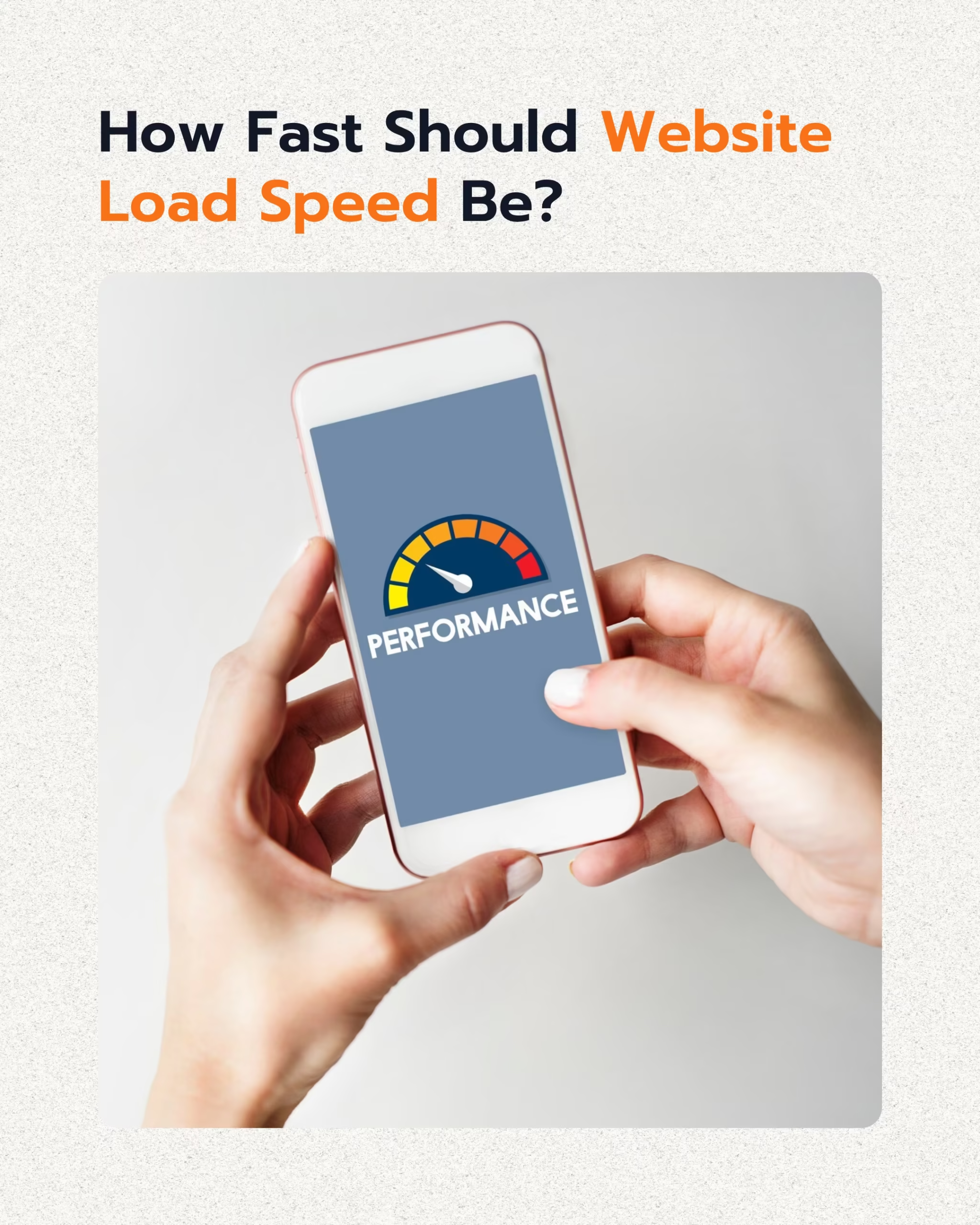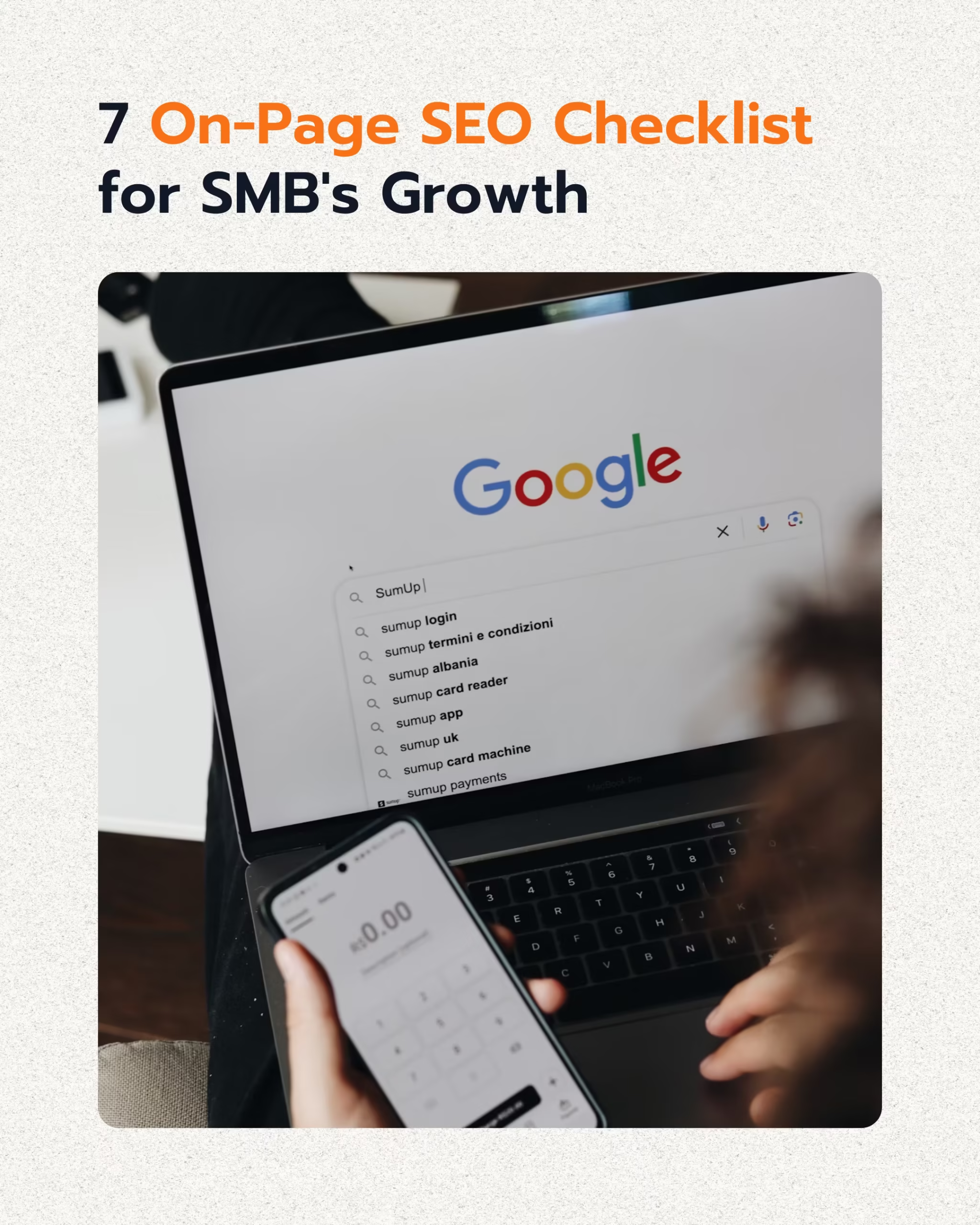Today, the ability to scale a business website without losing speed is critical for startups, growing businesses, established brands, and e-commerce stores. A slow website can cost you customers and revenue, especially as traffic increases. To scale business website performance effectively, speed, stability, and user experience must go hand in hand for sustained growth and satisfaction.
This guide explores essential strategies, from mobile optimization to infrastructure choices, helping you maintain peak performance as your online presence expands. We’ll cover market data, core strategies, and practical applications to keep your site fast and responsive.
Why Website Speed Matters for Scale Business Website Growth
Website speed directly impacts user engagement, conversion rates, and search engine rankings. Slow loading times can deter visitors, leading to lost opportunities and reduced profitability.

The Financial Impact of Slow Websites
Retailers face significant losses due to slow websites. A page load delay of just one second can reduce conversions by 7%, costing businesses billions annually. According to Hostinger, sites taking over 3 seconds to load lose more than 53% of mobile users.
- Reduced Conversions: A 1-second delay can drop conversions by 7%.
- High Bounce Rates: Bounce rates increase by 32% when page load times go from 1 to 3 seconds, as reported by Hostinger.
- Lost Revenue: Retailers lose $2.6 billion annually due to slow websites, according to Hostinger.
User Expectations and SEO Implications
Users expect fast loading times, with 47% anticipating a website to load in 2 seconds or less. This expectation directly influences purchasing decisions, as 70% of users say website speed affects their willingness to buy online, according to Hostinger. Google also prioritizes speed through Core Web Vitals, making it a critical SEO ranking factor.
What are the key takeaways regarding website speed?
- User Experience is Paramount: Fast sites keep users engaged and reduce frustration.
- Direct Impact on Sales: Speed correlates directly with conversion rates and revenue.
- Search Engine Visibility: Google rewards fast-loading sites with better rankings.
| Load Time (Seconds) | Conversion Rate Impact | Bounce Rate Increase | User Expectation |
|---|---|---|---|
| 1 | Baseline | 0% | Highly Satisfied |
| 2 | -7% | +9% | Expected |
| 3 | -14% | +32% | Unacceptable for 53% of mobile users |
| 5+ | -20%+ | +90%+ | High Abandonment |
Mobile-First Strategy for Scalability
A mobile-first approach is no longer optional; it’s fundamental for scaling your business website. The majority of global website traffic now originates from mobile devices, making mobile optimization a cornerstone of performance.

Dominance of Mobile Traffic
Mobile devices account for 54.4% to 59.2% of global website traffic in early 2024, as reported by UserGuiding. This trend underscores the necessity of designing and optimizing your site primarily for mobile users. Websites not optimized for mobile see users 5 times more likely to abandon them, according to Network Solutions.
- Prioritize Responsive Design: Ensure your site adapts seamlessly to all screen sizes.
- Optimize Touch Interactions: Design for easy navigation and interaction on touchscreens.
- Test Mobile Performance Rigorously: Use tools like Google Lighthouse to assess mobile speed and usability.
Benefits of Mobile Optimization
Optimizing for mobile improves user experience, boosts SEO, and directly contributes to higher conversion rates. A mobile-friendly design can significantly reduce bounce rates and increase engagement, especially for small businesses, where 73% had websites in 2025, up from 64% in 2020, as Network Solutions notes.
How does mobile-first design contribute to business strategy?
- Enhanced User Experience: Satisfies the majority of your audience.
- Improved SEO Rankings: Google favors mobile-responsive sites.
- Higher Conversion Rates: Mobile-optimized sites convert better, leading to business growth.
Case Study: Hestan Culinary’s Mobile-Optimized Programmatic Ads
Hestan Culinary, a digital marketing client, scaled conversions by expanding programmatic advertising via StackAdapt. Their strategy involved a full-funnel approach targeting qualified audiences immediately, including mobile users. By using catalog and native feed ads, they achieved a 218% increase in conversions and improved ROAS from 1.91 to 9.20, sustained for over 45 days, as detailed in a Single Grain case study. This success highlights how mobile-optimized ad placements can drive growth without degrading site performance.
Optimizing Core Web Vitals and Technical SEO
Technical SEO and Core Web Vitals are crucial for maintaining website speed and visibility as your business scales. These metrics directly influence how search engines perceive and rank your site.
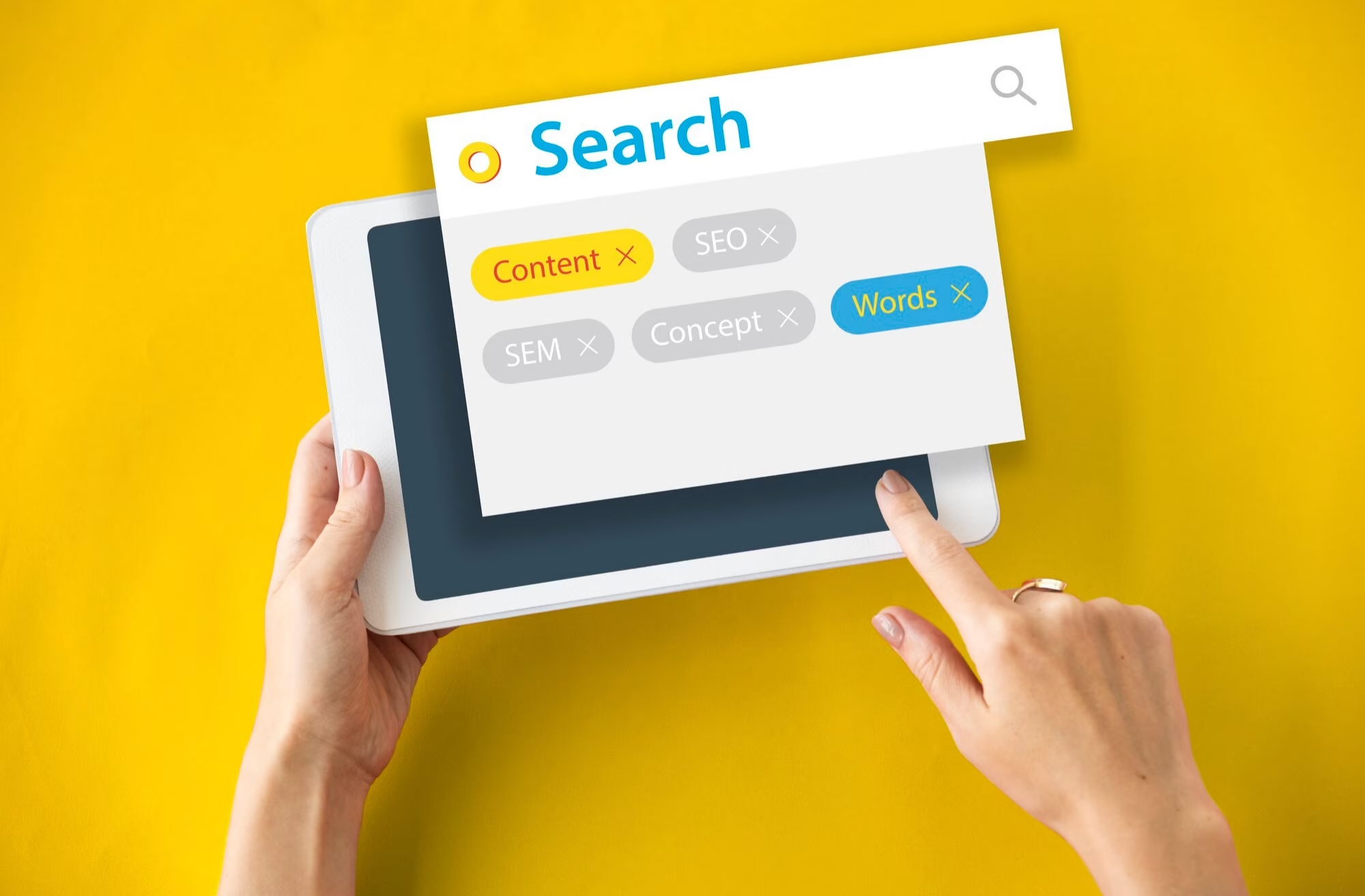
Understanding Core Web Vitals
Core Web Vitals are a set of specific factors that Google considers important in a webpage’s overall user experience. They include Largest Contentful Paint (LCP), First Input Delay (FID), and Cumulative Layout Shift (CLS). Optimizing these metrics is essential for SEO and user satisfaction.
- Largest Contentful Paint (LCP): Measures loading performance. Aim for 2.5 seconds or less.
- First Input Delay (FID): Measures interactivity. Aim for 100 milliseconds or less.
- Cumulative Layout Shift (CLS): Measures visual stability. Aim for 0.1 or less.
Technical SEO Best Practices
Beyond Core Web Vitals, a comprehensive technical SEO strategy involves optimizing various aspects of your website’s backend and code. This ensures search engines can crawl and index your site efficiently, which is a key business strategy for organic growth.
What are essential technical SEO practices for scaling?
- Clean Code: Minimize unnecessary JavaScript and CSS.
- Structured Data Markup: Implement schema markup to help search engines understand your content.
- XML Sitemaps: Ensure your sitemap is up-to-date and submitted to search engines.
- Robots.txt Optimization: Control how search engine bots crawl your site.
Impact of Technical Optimization on Speed
Technical optimization, such as image optimization, can increase website speed by up to 40%, according to Hostinger. This directly impacts Core Web Vitals and overall site performance. As Nathan Latka notes regarding Omnisend’s success, “Three years from now, if your SaaS isn’t showing up in AI-enhanced search, it might as well not exist,” highlighting the importance of SEO for sustained growth.
Leveraging Hosting and Infrastructure for Performance
Choosing the right hosting and optimizing your infrastructure are fundamental business strategy solutions for scaling your website without compromising speed. As traffic grows, your hosting environment must be able to handle increased demand.

Choosing the Right Hosting Provider
Your hosting solution forms the backbone of your website’s performance. Shared hosting might be sufficient for small sites, but scaling requires more robust options like VPS, dedicated servers, or cloud hosting.
- Cloud Hosting: Offers scalability and flexibility, allowing resources to adjust based on demand.
- VPS Hosting: Provides more control and resources than shared hosting, suitable for growing businesses.
- Dedicated Servers: Offers maximum performance and control for high-traffic websites.
Content Delivery Networks (CDNs)
CDNs are essential for global reach and speed. They distribute your website’s static content (images, CSS, JavaScript) across multiple servers worldwide. When a user requests your site, the content is delivered from the server geographically closest to them, significantly reducing load times.
Why should you use a CDN?
- Reduced Latency: Content delivered from nearby servers.
- Improved Load Times: Faster delivery of static assets.
- Enhanced Security: Many CDNs offer DDoS protection and other security features.
- Traffic Spikes Management: Distributes load, preventing server overload during high traffic.
Database Optimization and Caching Strategies
An optimized database and effective caching mechanisms are crucial for dynamic websites. As your site scales, database queries can become a bottleneck. Caching stores frequently accessed data, reducing the need for repeated database calls.
Examples of caching strategies:
- Browser Caching: Stores static assets on the user’s browser.
- Server-Side Caching: Stores rendered pages or database query results on the server.
- Object Caching: Caches database query results to speed up dynamic content.
| Hosting Type | Scalability | Performance | Control | Cost (Relative) |
|---|---|---|---|---|
| Shared Hosting | Low | Low | Low | Low |
| VPS Hosting | Medium | Medium | Medium | Medium |
| Cloud Hosting | High | High | High | Variable |
| Dedicated Server | High | Very High | Very High | High |
Content and Image Optimization Techniques
Optimizing your website’s content, especially images, is a straightforward yet powerful business strategy for improving speed. Large, unoptimized files can significantly slow down page load times, regardless of your hosting infrastructure.

Image Optimization Best Practices
Images often account for a large portion of a webpage’s size. Proper optimization can drastically reduce file sizes without sacrificing visual quality, directly contributing to faster load times. Image optimization alone can increase website speed by up to 40%, according to Hostinger.
- Compress Images: Use tools like TinyPNG or ImageOptim to reduce file size.
- Choose Proper Formats: Use JPEG for photographs, PNG for graphics with transparency, and WebP for modern browsers for better compression.
- Lazy Loading: Load images only when they enter the viewport, improving initial page load.
- Responsive Images: Serve different image sizes based on the user’s device and screen resolution.
Minifying CSS and JavaScript
Minification involves removing unnecessary characters (like whitespace, comments, and line breaks) from your code without changing its functionality. This reduces file sizes, leading to faster download and parse times for browsers.
How to minify your code:
- Use Build Tools: Implement tools like Webpack or Gulp to automate minification during development.
- Leverage CMS Plugins: Many content management systems (CMS) offer plugins for automatic CSS and JavaScript minification.
- Combine Files: Reduce the number of HTTP requests by combining multiple CSS or JavaScript files into one.
Prioritizing Critical CSS and Asynchronous Loading
Critical CSS refers to the minimum CSS required to render the visible portion of a webpage (above-the-fold content). Loading this CSS inline and asynchronously loading the rest can significantly improve perceived load times. Similarly, deferring or asynchronously loading non-essential JavaScript prevents it from blocking the rendering of your page.
Why are these techniques important?
- Faster Perceived Load: Users see content sooner.
- Improved Core Web Vitals: Directly impacts LCP and FID scores.
- Better User Experience: Reduces blank screen time and improves interactivity.
Agile Development and Continuous Monitoring
Adopting agile development methodologies and implementing continuous monitoring are business strategy best practices for ensuring your website scales efficiently without performance degradation. These approaches allow for rapid iteration and proactive problem-solving.

Implementing Agile Methodologies
Agile frameworks like Scrum@Scale help development teams manage complexity and deliver value quickly. This is particularly relevant when scaling, as it prevents development bottlenecks that might indirectly affect website speed and user experience.
How does Agile support scaling?
- Iterative Development: Small, frequent updates minimize risks and allow for quick adjustments.
- Cross-Functional Teams: Ensures all aspects of development (design, backend, QA) are aligned.
- Continuous Feedback: Regular reviews and retrospectives help identify and address performance issues early.
Companies like Lufthansa Systems have seen significant benefits from adopting Scrum@Scale, cutting delivery delays by 90% and accelerating product launches without compromising quality or speed, as detailed in Scrum@Scale case studies.
Continuous Performance Monitoring
Real-time monitoring tools are essential for tracking performance metrics and identifying potential bottlenecks as your website grows. Proactive monitoring allows you to address issues before they impact user experience.
What to monitor:
- Page Load Time: Track overall load times and individual asset loading.
- Server Response Time: Monitor your server’s ability to respond to requests.
- Error Rates: Keep an eye on 4xx and 5xx errors that indicate problems.
- Traffic Analytics: Understand user behavior and traffic patterns to anticipate load.
- Core Web Vitals: Continuously track LCP, FID, and CLS scores.
A/B Testing for Performance and Conversion
Running small A/B tests on conversion-related elements is a proven strategy to optimize user experience without slowing down your site. This allows you to make data-driven decisions about design and functionality that impact both speed and business outcomes.
Examples of A/B tests:
- Call-to-Action (CTA) Placement: Test different positions for optimal visibility.
- Form Field Optimization: Experiment with fewer fields to reduce friction.
- Hero Image Variations: Test different images for engagement and load impact.
According to ConvertCart, monitoring and improving user experience based on direct feedback like ad comments, reviews, and surveys weekly is crucial. Focus technical optimization on elements impacting conversion and retention first.
Website Scaling & Speed FAQs
How do I ensure my website remains fast as my traffic grows?
To keep your website fast with growing traffic, implement a robust CDN, optimize all images and code, upgrade to scalable hosting, and regularly monitor performance metrics. Proactive optimization prevents slowdowns before they impact users.
What are Core Web Vitals and why are they important for scaling?
Core Web Vitals are Google’s metrics for user experience: Largest Contentful Paint (loading), First Input Delay (interactivity), and Cumulative Layout Shift (visual stability). They are crucial for scaling because they directly impact SEO rankings and user satisfaction, ensuring your growing audience has a positive experience.
Why should I prioritize mobile optimization when scaling my business website?
You should prioritize mobile optimization because over 50% of global website traffic comes from mobile devices, as UserGuiding reports. A mobile-first strategy ensures a positive experience for the majority of your audience, improves SEO, and prevents high bounce rates, which are critical for business strategy and growth.
When should I upgrade my website’s hosting plan?
You should upgrade your hosting plan when you notice consistent slowdowns, frequent server errors, or anticipate significant traffic increases. Moving from shared hosting to VPS, cloud, or dedicated servers ensures your infrastructure can handle growing demands without performance issues.
What are the best practices for image optimization?
Best practices for image optimization include compressing images, choosing appropriate formats (JPEG, PNG, WebP), implementing lazy loading, and serving responsive images. These steps can increase website speed by up to 40%, according to Hostinger, significantly improving load times.
How does a CDN help with website scaling?
A CDN (Content Delivery Network) helps with website scaling by distributing your static content across multiple servers globally. This reduces latency by serving content from the server closest to the user, improving load times and handling traffic spikes more efficiently.
Can SEO contribute to website speed and scalability?
Yes, SEO significantly contributes to website speed and scalability. Technical SEO practices like code minification, image optimization, and Core Web Vitals adherence directly improve load times. A strong organic SEO strategy, as demonstrated by Omnisend’s 200,000 monthly organic clicks, builds sustainable traffic without relying on speed-degrading paid ads.
What is the role of caching in maintaining website speed?
Caching stores frequently accessed data, like rendered pages or database query results, temporarily. This reduces the need for repeated processing or database calls, significantly speeding up page load times and reducing server load, which is crucial for scalability.
How can I monitor my website’s performance effectively?
You can monitor your website’s performance effectively using tools like Google Lighthouse, Google Analytics, and specialized performance monitoring services. These tools track page load times, Core Web Vitals, server response times, and error rates, providing insights to proactively address issues.
What are common pitfalls to avoid when scaling a website?
Common pitfalls include neglecting mobile optimization, choosing inadequate hosting, failing to optimize images and code, ignoring Core Web Vitals, and not implementing a CDN. These oversights can lead to slow load times, high bounce rates, and lost revenue as your business grows.
How does programmatic advertising relate to website scaling without speed loss?
Programmatic advertising, when executed with a full-funnel and targeted approach like Hestan Culinary’s strategy, can drive significant conversions without adding bloat to your website. By focusing on qualified audiences and efficient ad placements, it supports business growth while maintaining site speed, unlike broad, untargeted campaigns.
What is the economic impact of a slow website on small businesses?
A slow website can be devastating for small businesses. With 73% of U.S. small businesses having websites, according to Network Solutions, a 1-second delay can reduce conversions by 7%, leading to lost sales and hindering growth. Many small businesses also lack essential features like calls-to-action, further limiting their ability to convert visitors.
Conclusion
Scaling your business website without losing speed is a multifaceted challenge that requires a strategic approach. By prioritizing mobile optimization, optimizing Core Web Vitals and technical SEO, investing in robust hosting and CDNs, and meticulously optimizing content and images, you can ensure your site remains fast and responsive as your business grows. Continuous monitoring and agile development practices will help you proactively address performance issues, safeguarding your user experience and conversion rates. A fast website is not just a technical detail; it’s a critical business strategy for sustained success in the digital landscape.
